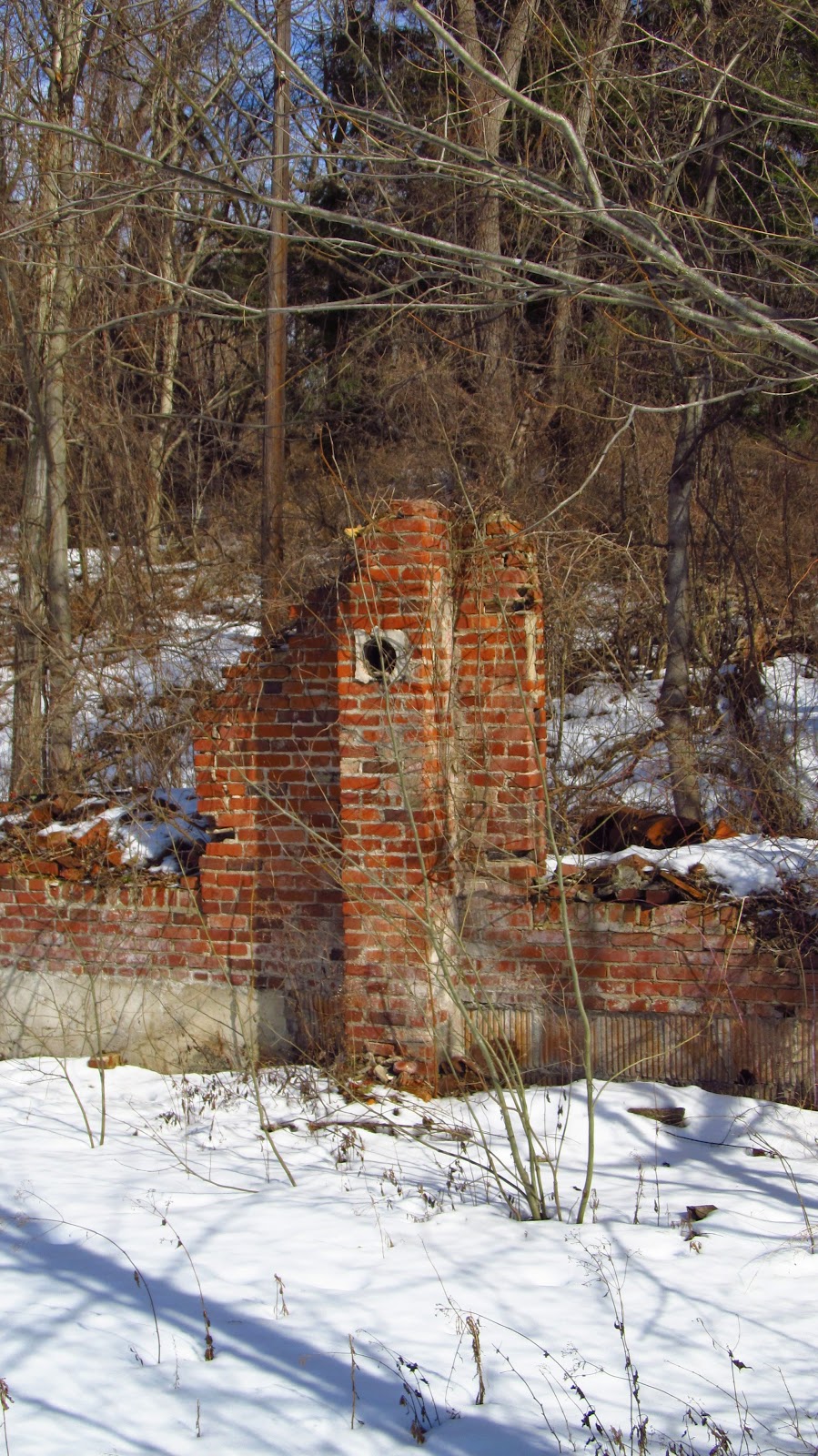Revere is a huge maze of coke ovens. Everywhere you turn, there is either an almost completely buried or severely deteriorated coke oven. From what we were able to pull together, there were at least two rows of rectangular ovens and one bank of beehives. At its heyday, Revere is listed as having 650 rectangular ovens, I'm assuming this does not include the beehives but that is just an assumption.
Revere dates back to 1900 and was another W.J. Rainey Coke Company venture. By 1902 there were 600 beehive coke ovens at Revere No.1. Revere No. 2, which was also located here, was a mine only. Revere No. 1 was a mine and coke works. In 1912 Rainey replaced the beehives with two rows of rectangular ovens. This is where it gets confusing to me. From the source that I'm getting this history from, it seems to omit the beehives that are still there. In 1915 the Coal Field Directory lists Revere as only having 550 ovens. Regardless, the rectangular ovens at Revere were the second of only two of these type in the original Connellsville Coke Region. The first being Mt. Braddock in 1908. Since this was a William J. Rainey operation, the coke was probably shipped to the steel mills in Cleveland.
The Revere works was one of the later plants to assume operations following the national coal strike of 1922. It wasn't until September that they were operating at full capacity. By 1929, 400 rectangular ovens were in use. The mine was exhausted by 1935 and the entire operation shut down for good.
The town of Revere (Post Office Uledi) is unique to other patch towns by it's abundance of single family homes. Certainly by 1900, more effort was placed on company housing in the hopes of attracting and keeping a stable workforce.
 |
| Some of the nearly buried beehive ovens. |
 |
| A couple of the rectangular ovens. |
 |
| The inner walls were all punched out of the rectangular ovens. |
 |
| They were all in really bad condition. |
 |
| These ones appeared to be holding up. |
 |
| Insides punched out on this one too. |
 |
| They're starting to get buried. |
 |
| This is what's left of the bank of beehives. Behind them is the park at Revere. |
 |
| Almost buried but I crawled inside. |
 |
| Just ruins. |
 |
| This entry is good and blocked. |
 |
| The beehives. One of the rare occurrences where the fronts remains but the ovens are collapsed. |
 |
| In the middle of the dirt road/trail running through here are the remains of a coke oven floor. |
 |
| Beehives. |
 |
| This is one of two abutments for a bridge that ran over here probably from the mine. |
 |
| The other abutment. |
 |
| Looking down the middle. There were more tires here than a Firestone warehouse. |
 |
| Some separated rectangular ovens. |
 |
| Inner wall of a rectangular oven. |
 |
| Very buried rectangular ovens. |
 |
| Strange ghostly remains of some rectangular ovens. |
 |
| It's always nice to find a skull hanging on a branch. Some rocket scientist sawed off its antlers. |
 |
| Barely there. Only the slightest remains. |
 |
| Directly in the middle of this photo you can see the remains of one rectangular oven. |
 |
| It started snowing. First wave. |
 |
| More rectangular remains. |
 |
| C.J.'s album cover. |
 |
| More remains. |
 |
| One final look at the rectangular ovens. |
 |
| On the way out I noticed this was the end of the bank of beehive ovens. |
 |
| The first oven in the bank. |










































































